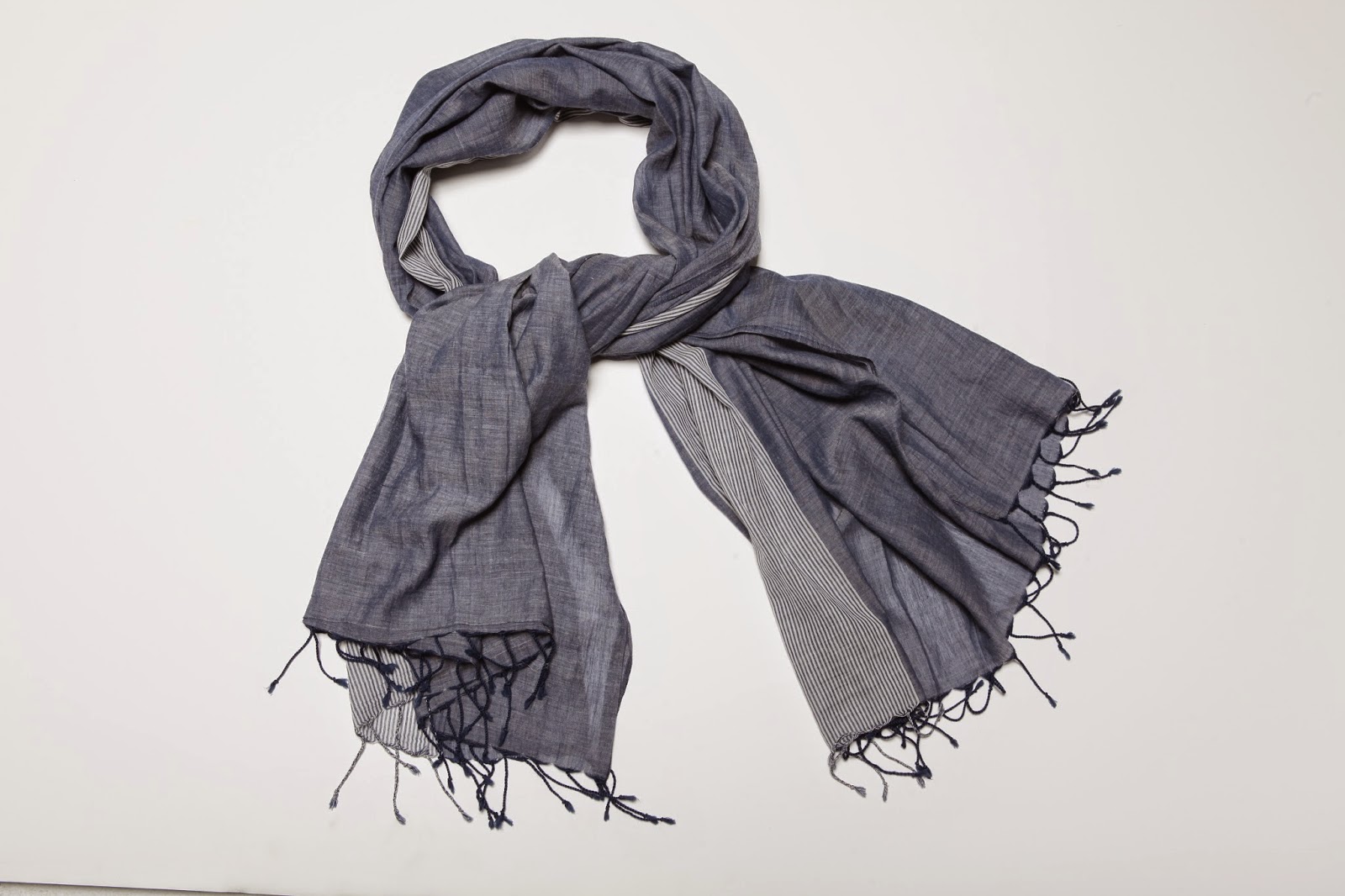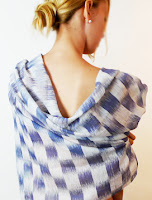Since India opened its economy in the 90s, the
government seems to be repeatedly caught by surprised by the need to protect
the collective intellectual property of Indian culture.
 |
| One of our khadi fabrics. "Faded Denim" is one of our most popular khadi scarves/ |
Years ago, I did a story about how a multi-national
chemical company swooped in and patented the active ingredients of the neem
tree. The neem tree is omni-present in every village in India and knowledge of
it’s uses have been passed down through the ages. Considered sacred, every part
of this amazing tree has a use. Most commonly, the twigs are used as a poor
man’s tooth brush.
My parents grew up using a neem twig to clean their
teeth and gums every morning and you can still see small twigs for sale in
village markets. The leaves, the bark,
the wood all have medicinal uses from everything from an insecticide to birth
control. In 1992, W.R. Grace, using U.S. patent laws secured rights to the
active ingredient and claimed it as their own. They also started suing Indian
companies who were making incesticide using the same ingredients – something
they had learned from the common cultural knowledge.
Since then this case has become an international
dispute – and launched the idea of ‘biopiracy,’ around the world. The question
is defining ‘intellectual property’ as
belonging to a culture that birthed the idea or the multi-national corporation,
which created a product from this knowledge as well as its own research? For
now, the patent is still standing, despite efforts to revoke it.
Now the exquisite hand-woven fabric called “khadi’ is
facing the same battle. Khadi is the
original Indian textile – seen as the ultimate symbol of sustainability. No
energy is required at all to make cotton fiber into this fabric. The great
Mahatma Gandhi celebrated weaving khadi as a meditation and a way for India’s
masses to sustain themselves with dignity.
I have to agree with him. I’ve been to rural are as
where there is no reliable water or electricity – and yet, khadi spinning and
weaving sustains everyone.
It seems that just as the Indian government is finding
some success in promoting ‘khadi’ as a brand, companies in Germany, Spain and
Hungary have trademarked the name ‘khadi’ and applied it to everything from
machine-made cloth to shampoo in European markets.
 |
| In 'Khadi Coil" we mix silk with cotton khadi threads. |
It seems the word ‘khadi’ is becoming one of
those words that can be applied to any product that the producers want to be
seen as ‘eco-friendly.’ What do you think?
Among textile lovers, real 'khadi' is treasured
like gold. It’s not easy to find real khadi – cloth where the yarn is actually
twisted together by hand. This
hand-twisting makes the fabric incredibly soft – in part because the fibers
have been handled so much.
Unlike fibers that go into mills to be
processed into cloth – khadi does not require any chemicals to be processed. A simple starch made with Basmati rice and water is used to strengthen the fiber when weaving – and then washed it out
after it is taken off the loom.
Indigo Handloom already offers hundreds of varieties of
‘khadi.’ I continue to search for more
to offer our customers - as a way of preserving this amazing fabric and keep
this knowledge alive.
For now, the Indian government is mulling ‘future
course of action’ including taking the issue up with the EU. Let’s hope khadi
fares better than the neem tree.
















